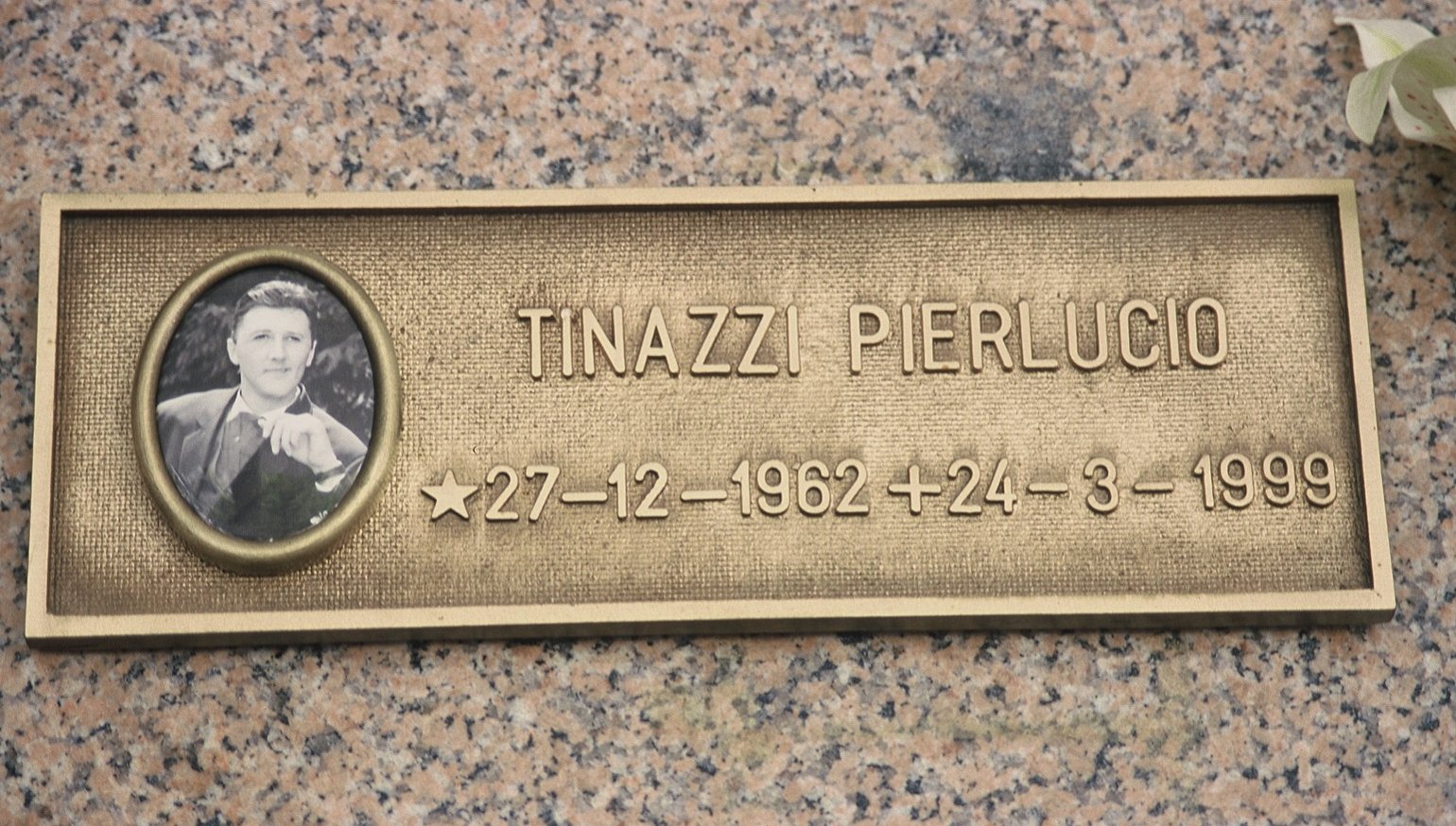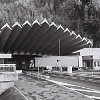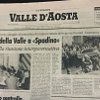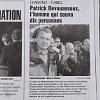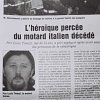Twenty years ago, Pierlucio "Spadino" Tinazzi was a security guard who patrolled the Mont Blanc tunnel in the Alps by motorcycle, in order to ensure a steady flow of traffic. Except for his uniform and motorcycle, he lived a life almost utterly lacking in conspicuity.

Four years after the tunnel fire, in 2003, I traveled to Val d’Aosta to write "Searching for Spadino." I set out to write a biographical sketch of the hero, but along the way, something else happened. An angel sat on my shoulder and dictated a story better than I could ever have written on my own. You think I’m taking some kind of poetic license saying that, but I’m not.
Versions of "Searching for Spadino" were published in Canada, France, and the United States. The U.K. magazine Bike ran it, then re-printed it on the occasion of the magazine’s 500th issue as one of their all-time favorite stories. I included it in my book "On Motorcycles: The Best of Backmarker." (If you’re not familiar with the story, my favorite version is this audio one, on Soundcloud.)

Although the story I pitched the Times was mainly about civil engineering, my editor there got more and more interested in the Spadino legend and eventually wanted to lead with that. I didn’t want to republish anything that wasn’t 100 percent defensible. So after a long Skype chat on engineering and safety topics, I took the opportunity to ask Berthier: After all these years, could he finally confirm Spadino’s heroic actions?
Jean-Marc, a very nice guy, fell silent for a long moment before saying, “My advice is, don’t become preoccupied with some accounting of lives saves versus lives lost.” When I pressed him, he told me that he’d have to check.
For the first time, I had substantive doubts about the story I wrote 15 years ago.
In a face-to-face conversation, my passive comprehension of Italian is pretty good, but I’m useless over the phone. So I reached out to an Italian moto-journo, Paolo Saormino, and offered him an hourly rate to make few calls on my behalf, to Italian authorities. He brusquely told me that he had no interest in reopening the Spadino story.
Again I wondered if there was more (or less) to the story.

Another search for Spadino
Then I stumbled down an Internet rabbit hole. As I followed countless French news links from 2005, I skimmed over a reference to Tinazzi that suggested he’d never actually saved anyone. What? No one? That made my stomach drop, but I didn’t bookmark it, and couldn’t find it a second time.
So I went even deeper into Google, bookmarking results that came up when I toggled my language preference between English, French, and Italian. The first thing I noticed was that the story I wrote in 2003 had really gone viral, before that phrase had entered the lexicon.
Although my description of Tinazzi’s actions was secondhand (based contemporaneous newspaper accounts and the FIM medal citation) the account that I wrote was the one that really got traction — probably because the small regional newspapers that had reporters within an hour of the Mont Blanc Tunnel didn’t have online editions in 1999, but my 2003 story was published on the internet. I found many subsequent stories that I thought were patterned on — if not plagiarized from — "Searching for Spadino."
When I did my research in 2003, all the official reports were under seal and the witnesses were under a gag order. Later, those reports were unsealed and witnesses testified in French court in 2005 and again at appeal in 2007.
Which brings me to this unsettling truth: The account that I’d presented as a fact — the story that Tinazzi had ridden in and out of the tunnel, ferrying out survivors — was not true. He didn’t successfully rescue anyone.
How did I get that so wrong? By believing what I read in the papers.

How a legend was born
When I went to the Alps to research the story in 2003, one of the first things I did was visit the newspaper offices in Val d’Aosta and Chamonix in France, where I read all of the contemporaneous reporting on the fire. My description of the fire and the first response was based on French and Italian newspaper stories, which breathlessly credited Tinazzi with rescuing several people over the course of multiple trips into the tunnel.
In hindsight, I should have wondered why none of those newspaper accounts included photos, names, or quotes from the people he’d saved. I should have questioned how Tinazzi managed to operate in the French zone, when fully kitted firefighters could not. In my limited defense, no one else questioned those things, either. When the FIM presented Tinazzi’s family with its gold medal, the federation’s own press release seemed to admit that details were hazy, although it stuck to the orthodox account of the day.
The FIM regrets that it has not the facilities to report on this question in detail, but it would like to take this opportunity to report details of the courageous actions of a motorcyclist at the scene of the Mont-Blanc tunnel fire in March 1999.
The motorcyclist Pierlucio Tinazzi entered the smoke filled tunnel from the Italian side a number of times and successfully brought out on his motorcycle many motorists whose vehicles had been trapped inside the tunnel. Unfortunately, he failed to return from his final visit into the Tunnel and himself became a victim of the tragic inferno. In recognition of his brave and totally unselfish actions, the FIM has decided to posthumously award Pierlucio Tinazzi its Gold Medal for Motorcycling Merit Distinctions. This is the highest FIM award of which only two are permitted annually.

There may actually be a clue in the FIM citation that explains how Tinazzi’s actions were so misreported, and it’s the phrase, “...entered the smoke-filled tunnel from the Italian side...”
Tinazzi wasn’t on the Italian side. He was Italian, but as it happened, he entered the tunnel from the French side. On that day, atmospheric conditions created a strong breeze in the tunnel, and almost all the smoke and heat billowed back towards France. No one could survive downwind, but a small Italian crew got quite close to the fire from the other side. They saved several people, ferrying them out to the Italian portal. Coincidentally, they were assisted by a French motorcycle security guard who happened to be on the Italian side when the fire broke out (although he was not riding a motorcycle that day; he was driving a Renault Express minivan).
So there was a "motorcycle guy" who successfully rescued people, and a "motorcycle guy" who died attempting a rescue; they just weren’t the same person.

In the original version of "Searching for Spadino," I wrote:
The first people Tinazzi found were well back from the fire. He showed them where the fresh-air vents were located, along the base of the tunnel walls.
How did Tinazzi find stalled vehicles? By bumping into them? Among the dead, Tinazzi found someone still alive. Helping him onto the back of his motorcycle, he rode a ghastly slalom back to the French portal.
Of all the rescue workers who entered the tunnel after the fire had begun, only Pierlucio Tinazzi went back in. He rode in and out—a seven-mile round trip. Rode in, and out. In and out. In and out, carrying passengers each time...
On his fifth entry, Pierlucio came upon Maurice Lebras, a French truck driver who was alive but unconscious. He couldn’t wrestle the trucker onto his motorcycle, but refused to abandon him. In his last communication with the control room, he said he’d dragged the man into a small room off the main tunnel, called “niche #20.”
Niche #20 had a “four-hour” fire door. The fire burned for 50 hours. A few yards away in the tunnel, Pierlucio’s BMW melted into the roadbed.
In the absence of any direct account of what Tinazzi had done inside the tunnel, I speculated. I thought that what I wrote, or something like what I wrote, must have been true. That was a sin against journalism. I didn’t know that I was committing a sin at the time. But somewhere in the back of my mind, a cynical synapse flashed, “too good to be true.”
That’s why I went to the tunnel offices; to confirm the accounts published in local newspapers in 1999 and repeated in the FIM medal citation. I was frustrated in that effort by the fact that official records — security video, recordings of radio traffic, etc., — were sealed due to the ongoing criminal investigation into the deaths in the tunnel. All witnesses were under legal gag orders in Italy and France.
But one detail nagged me: While the tunnel was still patrolled by guys on bikes, they’d switched from proper motorcycles to BMW C1 scooters. If you knew that Spadino had managed to save several people on a motorcycle, would you really re-equip the force with scooters that had no provision for a passenger?

When I wrote Searching for Spadino, I thought sealing the records and putting gag orders on witnesses was basically a conspiracy between French and Italian bureaucrats to ensure that no one was ever held responsible for the fire. The story ended there, as far as I was concerned.
Years later, a full account
Worried that I’d gotten it wrong all those years ago, I started waking up in the middle of the night thinking about Boolean search strategies. Finally, I uncovered a 97-page, minute-by-minute account of the fire, produced by Le Service Régional de Police Judiciaire de Lyon, after deposing hundreds of witnesses and experts, and analyzing thousands of photos, security logs and video, and other pieces of forensic evidence.
The facts had been unsealed since 2005 trial and the report appears to have been available online since at least the 2007 appeal, which finally closed all of the cases resulting from the fire. So I could’ve found it 12 years ago, but I didn’t, because I wasn’t looking. Frankly I’m surprised that no one ever e-mailed, or phoned or tweeted, “Gardiner, you’re full of shit!” I guess my readers are all motorcyclists who would probably prefer to continue to believe my version.
So, what really happened?
Tinazzi was outside the tunnel, at the French portal, when the Belgian truck entered the tunnel; I’d been right about that much. Within minutes, oncoming vehicles (traveling in the direction from Italy to France) saw smoke coming from the Belgian truck, and flashed their lights at the driver as they crossed paths.
It’s possible Spadino saw something that made him suspect that truck would get into trouble, so he followed it into the tunnel. It’s also possible that one of the drivers exiting the tunnel alerted him to a problem. But for all I know, he thought he was making a routine return trip to Italy. Nothing in the court record suggests his motivation.
Security video showed that almost as soon as Spadino entered the tunnel, he found himself in increasingly thick smoke. Witnesses (the last people to safely escape the tunnel in the direction of France) thought he was trying to catch up to the burning truck. He never reached it. He stopped when the smoke became too thick. He found Maurice Lebras unconscious, and dragged him into Niche #20.
The told and retold story — that, before finding Lebras, Spadino had exited to safety and returned over and over, rescuing up to 10 other people — was, in hindsight, just a story we wanted to believe. I suppose there was another reason motorcyclists in particular loved that version: It seemed to have been enabled by the motorcycle’s maneuverability in the tight confines of the tunnel. No other vehicle would’ve enabled the rescues.
What the hell, eh? If all this leaves you unsatisfied, try to imagine how I feel.
Jean-Marc Berthier’s take on this is that Spadino was not trained or equipped to fight a fire. He could have turned back, but he didn’t. He died trying to save a total stranger. Was that heroic? It was certainly selfless.
But.
But the original story described a different category of heroism. If the initial newspaper reports had been accurate, I doubt that I would have traveled to Val d’Aosta in search of the hero’s back-story.
As I write this, I’ve spent the last week going back over nearly 80 pages of handwritten notes that I made on that trip, reviewing my own photos, and copies of newspaper clippings, wondering whether I should have known better. Too little, too late: I only recently came across the actual citation issued with Tinazzi’s Medaglio d’Oro al Valore Civile, translated here from Italian:
[Tinazzi] worked as a traffic monitor, on a motorcycle, during the Mont Blanc Tunnel fire. On his own initiative and with exceptional courage, he stopped to help a French motorist in difficulty, accompanying him in a pressurized shelter, where he was found lifeless during subsequent recovery operations. A clear example of civic virtue and the spirit of self-sacrifice, Mont Blanc Tunnel, 24 March 1999.
That citation, was issued on February 6, 2000. So it was public when I was in Val d’Aosta in 2003, but I never saw it. Of course, the government officials who wrote it were privy to information that, at that time, was strictly denied to journalists. If I had seen it, I think I would have been struck by fact that it does not mention anyone actually being rescued. I might have brought the two citations to the tunnel administrator, or the Carabinieri, and asked, What’s with this discrepancy? They might’ve answered, but I doubt it; no one violated the gag orders to answer any of my other questions.
I wonder whether I would have detected my mistake if my Italian was better, or if I’d just spent more time in the archives looking for later coverage of the tunnel fire. I recently hired a translator, to write an enquiry about whether or when news outlets ever actively corrected the record. I sent it to the editorial desks of regional newspapers in Milan and Turin, and local papers in Aosta. To date, I’ve had no replies.

I suppose if I had the time and budget, I’d go find the reporter who wrote the first account of Spadino saving a bunch of people and ask, “Where the hell did that come from?”
If he accidentally conflated the story of Spadino entering the tunnel by motorcycle from France, with the story of people being rescued from the Italian side of the fire — well, I suppose that I would sympathize with some local reporter rushing to meet a deadline on the story of the decade. I would like to know if the local papers ever published a correction that I missed. Once the entire region had seized on Spadino’s unlikely heroism, it would be incredibly awkward to pull that it back; I’d sympathize with the editor who let it slide, or buried a small correction to what had been a front-page story.
Realistically though, I probably never will find that first reporter or try to pin him down. So I’ll just try to forget that the best writing I’ve ever done was, unfortunately, not very good journalism.




